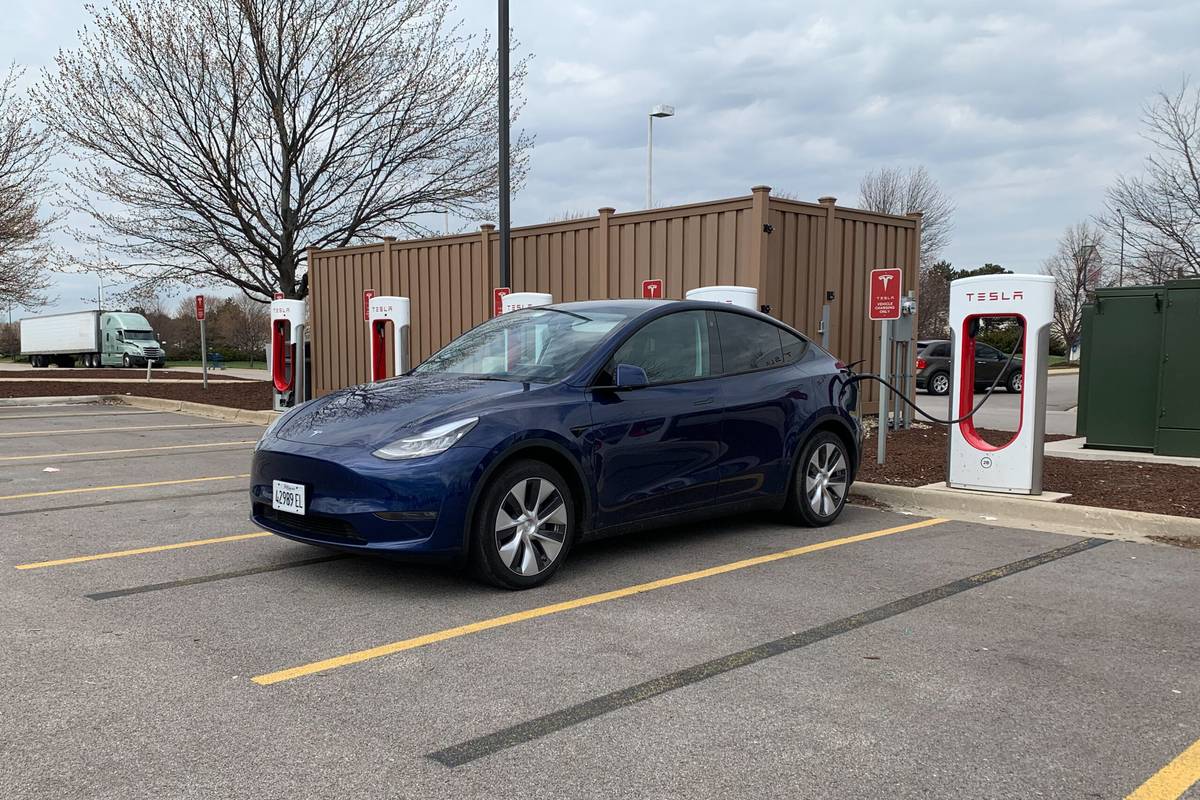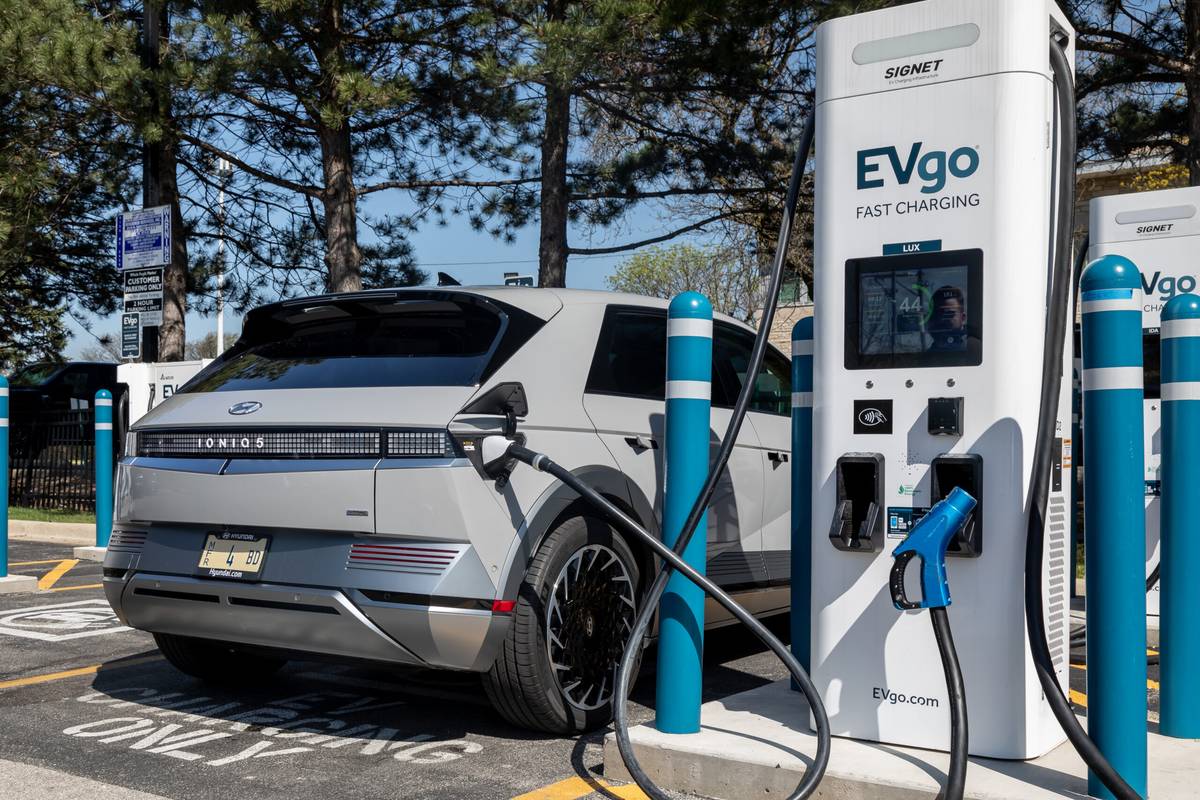J.D. Power Study Finds EV Owners’ Satisfaction With Public Charging Slipping

The raft of automakers forging agreements to give their buyers access to Tesla’s Supercharger stations comes not a moment too soon. In fact, according to J.D. Power’s latest Electric Vehicle Experience (EVX) Public Charging Study, the nation’s public charging infrastructure is playing catch-up.
Related: When Will All Fast-Charging Stations Be Open to All EVs?
EV Owners Can’t Get No Satisfaction
Now in its third year, the EVX Public Charging Study uses data from the PlugShare charging app to gain what J.D. Power describes as a “view into the overall experience” of public charging at Level 2 and DC fast-charging stations. J.D. Power aggregates ratings from survey participants who score charging-station networks across 10 factors: ease of charging, speed of charging, physical condition of the station, charger availability, location convenience, things to do while charging, how safe the location feels, ease of locating the station, cost and ease of payment.
According to the results of this year’s survey, customer satisfaction with public Level 2 charging stations has dropped 16 points to 617; this is the lowest figure recorded in the three years J.D. Power has been conducting the study. Satisfaction with DC charging stations dropped even further, falling 20 points to 654.
Those figures may look worse than they are, though. On a 1,000-point scale, those are decreases of just 2.5% and 3%, respectively. And it doesn’t strike us as particularly surprising that user satisfaction is decreasing, as EV sales are currently growing faster than the number of available chargers. Tesla opening its Supercharger network to other brands will undoubtedly make for more happy customers; J.D. Power notes the Supercharger network is “the only DC fast charger brand to rank above segment average.”
That’s an indirect way of stating that customer satisfaction with Superchargers versus other fast chargers holds such a significant lead that it skews the average, with the network’s score of 739 making other brands, such as second-highest ranking ChargePoint’s score of 606, look better than they are; EVgo and Electrify America scored 569 and 538, respectively. But as EVs from Ford, GM, Mercedes-Benz and others start to crowd out Teslas at Superchargers, the Silicon Valley company’s number may drop in future studies.
Volta edged out Tesla for the top spot in Level 2 charger rankings, scoring 665; Tesla’s Destination chargers got a score of 661. Other leaders in that space were ChargePoint (618), SemaConnect (578) and Electrify America (542).
Charging Complaints Continue

J.D. Power notes in the study that the most common criticisms across all charging networks were charging speed and charger location. The former complaint, again, makes sense as EVs merge into the mainstream. Early adopters likely had more realistic expectations of the negative aspects of EV ownership. As for charger location, Brent Gruber, executive director of the EV practice at J.D. Power, says, “The data suggests that DC chargers — which charge faster — should be located along travel routes, while Level 2 chargers — essentially used for convenience charging — should be easily accessible near places where EV owners may already be visiting such as retail venues and entertainment venues.”
The most frustrating aspect of the charging experience — and one Cars.com’s editors have encountered many times with electric test vehicles — is not when the charger is hard to find or its speed, but when it’s simply nonfunctional. Gruber says “reliability of public chargers continues to be a problem,” adding that “one of every five visits ends without charging, the majority of which are due to station outages.” This is a national average, of course, and according to survey respondents, the Miami and Fort Lauderdale areas have the least reliable charging infrastructure in the nation, with more than one-third of visits being abandoned due to inoperable chargers or lengthy wait times.
Overall, the study’s findings sound dire, but it’s important to keep them in context. The auto industry is in the opening stages of a fundamental shift — a type of change that doesn’t happen quickly. The EVX Public Charging Study is not a final report card, either, but rather a progress report. And from the spate of recent news about new charging partnerships and network expansions, it’s clear that J.D. Power and the car-buying public are not the only ones aware of these issues.
More From Cars.com:
- 6 Automakers Band Together in New EV Charging Network
- How Much Do Electric Car Charging Stations Cost?
- Home EV Chargers and How to Choose One
- Which New Electric Vehicles Come With Free Charging?
- How Long Does It Take to Charge an Electric Car?
Related Video:
Cars.com’s Editorial department is your source for automotive news and reviews. In line with Cars.com’s long-standing ethics policy, editors and reviewers don’t accept gifts or free trips from automakers. The Editorial department is independent of Cars.com’s advertising, sales and sponsored content departments.
Featured stories



